If you’re looking to experience the very best that Hakone has to offer, then the Hakone Loop is a must-do adventure. This popular route allows you to fully immerse yourself in the stunning landscapes, cultural treasures, and natural wonders of this enchanting region in Japan. It’s the perfect 1-day itinerary for Hakone.
The Hakone Loop is a scenic circuit that takes you on a journey through Hakone’s most iconic sights, including Lake Ashi, the Owakudani Valley, and the Hakone Shrine.
Along the way, you’ll have the opportunity to enjoy panoramic views of Mount Fuji.
You can travel along the loop in a clockwise or counterclockwise direction. We did this counterclockwise, as did many others, but you are free to do this however you see fit.
Map of the Hakone Loop
Traveling along the Hakone Loop
The Hakone Loop is not merely about reaching the iconic sights such as the Hakone Shrine, but also about enjoying the journey as you navigate through the picturesque landscape.
The Hakone Loop consists of scenic train rides, a trip in a cable car over a volcanic valley, and a relaxing boat trip on the idyllic Lake Ashi.
Below we discuss exactly what you can expect when traveling along the Hakone Loop. We discuss everything in a counterclockwise direction since that is how we did it.
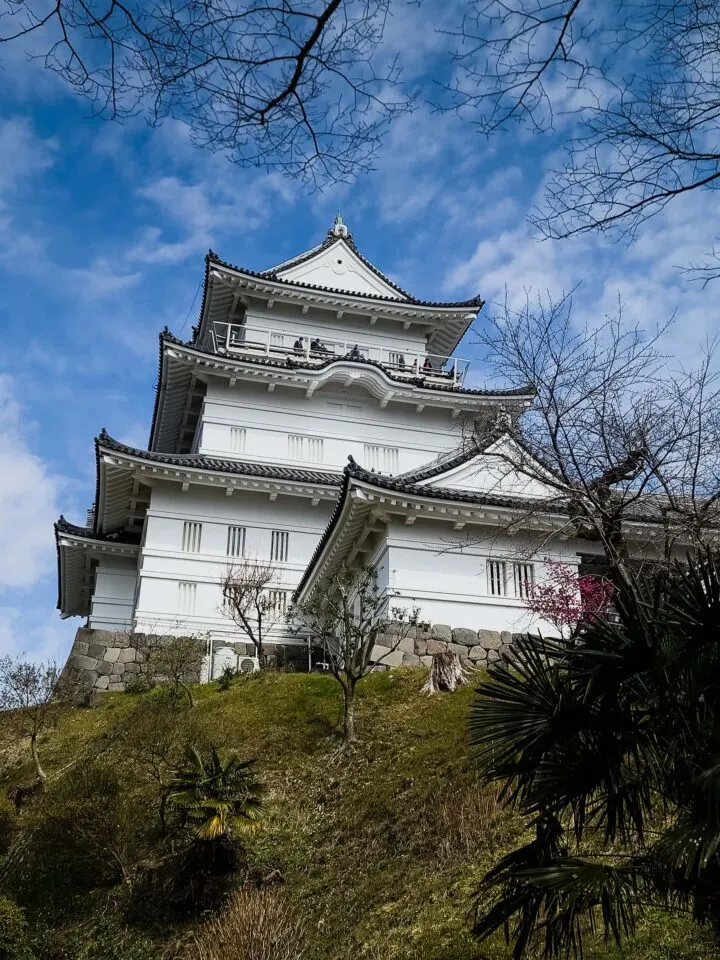
Odawara
If you travel by JR to Hakone you will need to switch trains in Odawara station. This gives you the opportunity to quickly stop by Odawara Castle which is right next to the station. (take the east exit)
The castle dates back to the 15th century. It stands on a hilltop overlooking the city and is surrounded by a beautiful park with many cherry trees.
The castle can be visited and you can climb the main keep to the very top from where you can enjoy breathtaking views of the city and even of Mt. Fuji on a clear day.
Next, continue your journey to Gora with the Hakone Tozan train. You first make your way to Hakone-Yumoto Station where you board a train for Gora.
The Hakone-Tozan train to Gora
The train ride on the Hakone Tozan Railway between Hakone Yumoto and Gora is a truly thrilling experience. It is a scenic journey through the lush forests and rolling hills of Hakone. The train gently chugs along the tracks, winding its way through tunnels and around curves, and the journey even incorporates some switchbacks, the only way to navigate the steep inclines.
The large windows of the train provide ample opportunities for you to capture the beauty of the passing scenery.
Along the way, several announcements will be made. You will learn more about the challenges encountered in building this railway and about the views you pass.
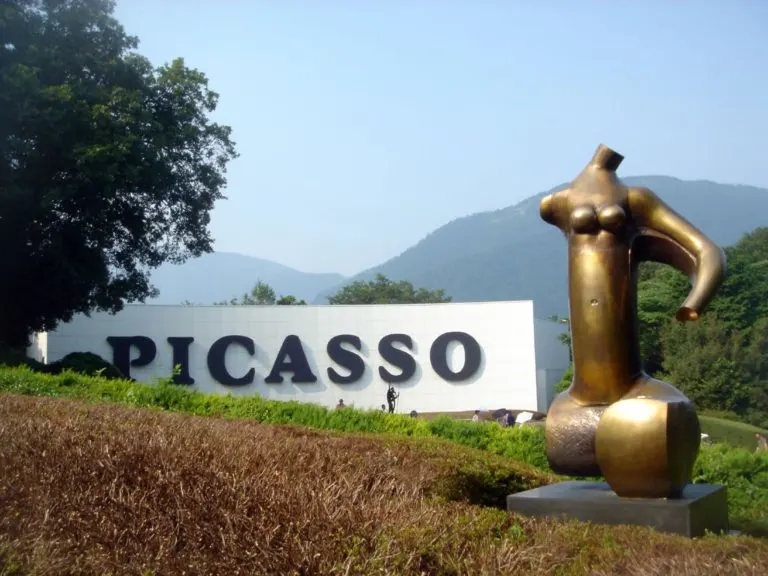
Hakone Open-Air Museum
The train to Gora passes the renowned Hakone Open-Air Museum. Art lovers who want to visit this unique museum need to get off at Chokokunomori Station.
The museum showcases a diverse collection of modern and contemporary artworks from both Japanese and international artists. The artworks are scattered throughout the lush greenery.
You can take a leisurely stroll through the well-manicured gardens and enjoy the sculptures as well as the natural beauty that surrounds you.
In addition to the outdoor exhibits, the museum also houses several indoor galleries and a Picasso exhibit.

Gora
Once you arrive in Gora you will need to transfer to the cable car. This is a piece of cake as the cable car shares the station with the train.
If you wish, you can stay on the cable car to the final stop, but we recommend stopping along the way for a short visit to Gora Park.
Gora Park is a meticulously landscaped garden nestled on the steep. mountainside. It features a stunning rose garden, several vibrant flower beds, and a traditional Japanese garden. The entrance is free for Hakone Freepass holders.
To visit the park you can get off at Koen-Kami Station or Koen-Shimo Station. From Koen-Kami you reach the highest entrance of the park and you can walk down to take the train back at Koen-Shimo.
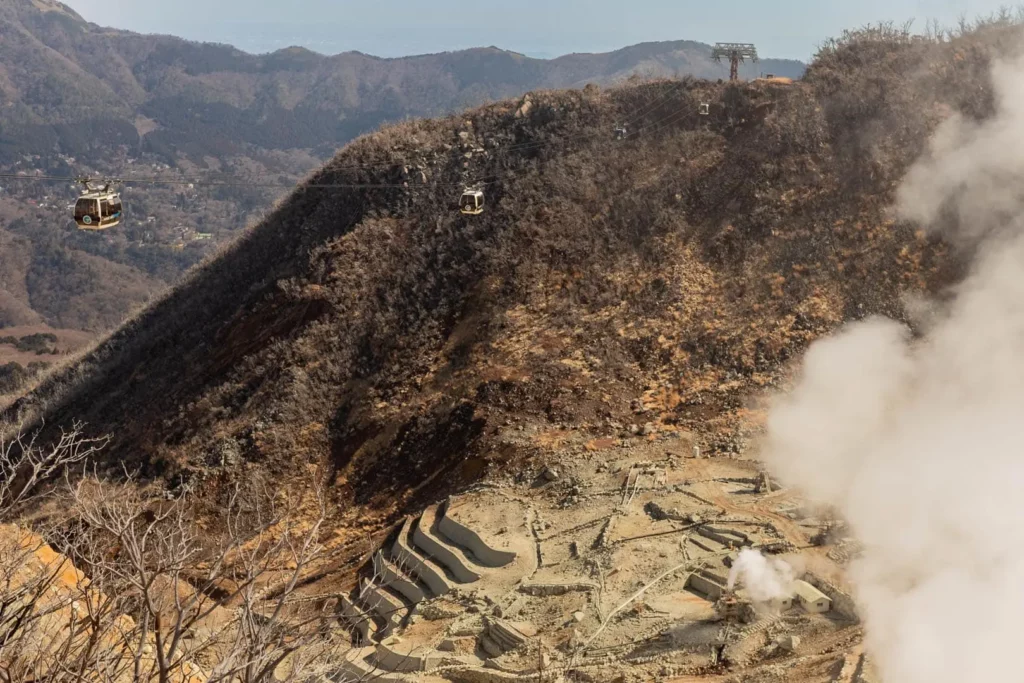
Hakone Ropeway
The cable car stops at Sounzan Station where you board the Hakone Ropeway. The ropeway ascends to the Owakudani Station where you pass over the volcanic valley right before arriving at the middle station.
At this station you can witness the fascinating geological activity up close, with steam rising from the ground and the distinct smell of sulfur in the air. You can also taste the black eggs, a local specialty. The eggs are boiled in the hot springs and eating them is said to prolong one’s life.
From here you continue the journey with the 2nd part of the cable car to Lake Ashi.
From the cable car you are treated to awe-inspiring vistas of the surrounding landscapes, including, on clear days, iconic Mount Fuji when approaching and leaving the middle station.
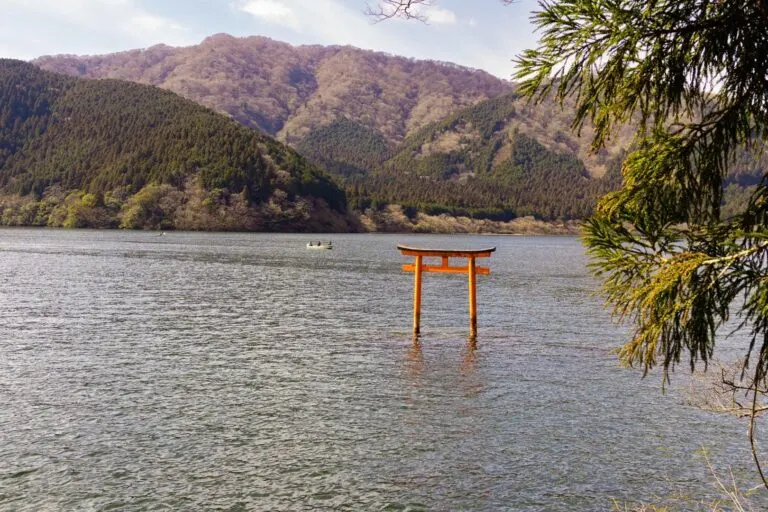
Lake Ashi
Once you arrive at Lake Ashi, you can choose to immediately board the pirate ship or first take a walk along the lake.
We walked from Togendai (the ropeway terminal) to Moto-Hakone and if you have the time we absolutely recommend it. It was a beautiful walk and the Kakuryu Shrine that you pass along the way is sort of a hidden gem in the Hakone area. It’s absolutely worth a visit.
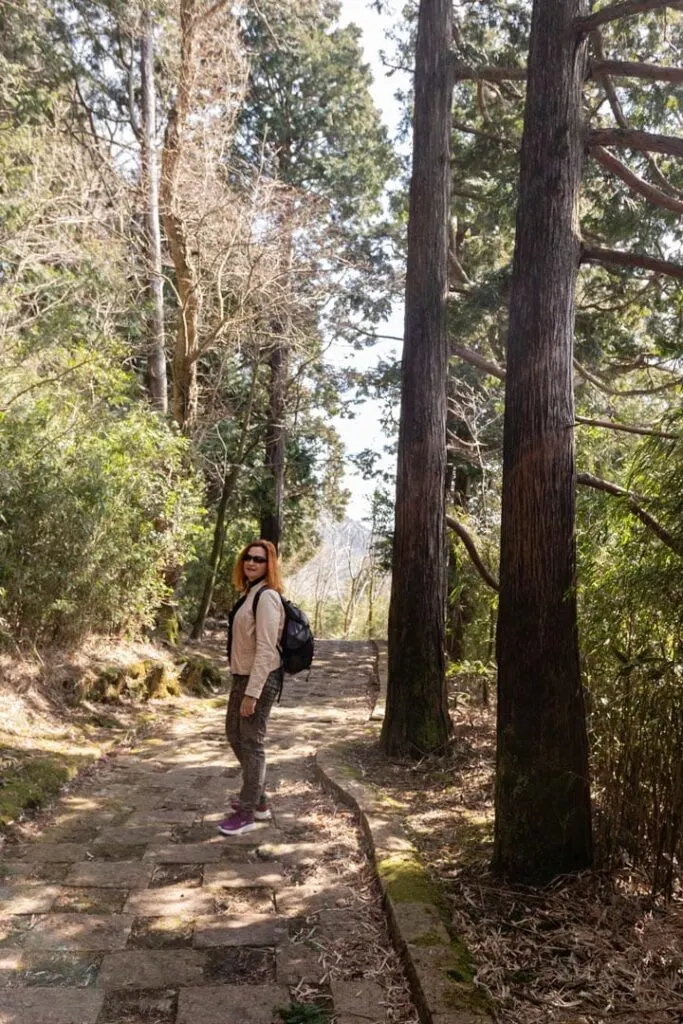
With the pirate ship you set sail directly to Hakone-Machi or Moto-Hakone, skipping the Hakuryu Shrine and Komagatake ropeway. To visit those places you can either hike along the lakeshore or take the Odakyu Highway bus to Komagatake.
Since the bus only runs sporadically the 35 min walk will usually be the fastest option. It’s certainly the most scenic option.
Once past the ferry terminal, the walking path branches off from the road and from there to the base station of the Komagatake ropeway you walk along a separate trail surrounded by lush greenery with beautiful views of the lake.
First you pass the Hakuryū Shrine. Thanks to its location in the tranquil forest along the lakeshore the shrine is not only a place of worship but also a natural sanctuary.
Hakone Shrine is the popular choice among tourists, many skip the Hakuryū shrine. This results in a peaceful and serene atmosphere. We enjoyed leisurely walks along the serene pathways and immersed ourselves in the beauty of the surrounding nature. Unfortunately, the entrance fee is not covered by the Hakone Freepass.
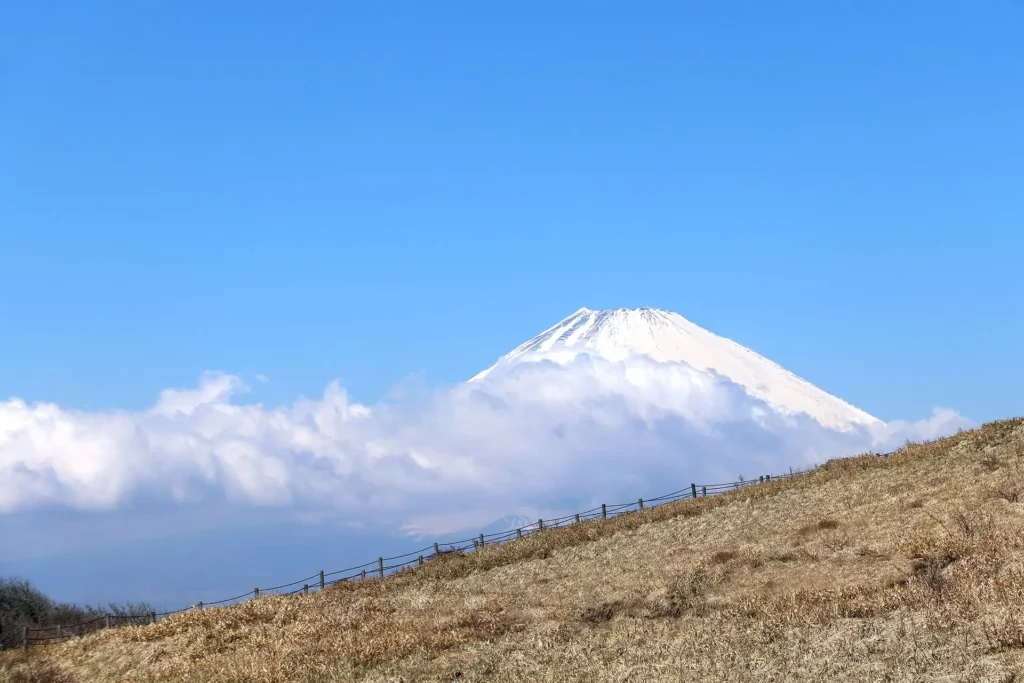
From the Shrine it is not far to the Komagatake ropeway. If you continue along the trail you will automatically arrive at the base station.
On a clear day it is worth getting to the top for the beautiful views of Mt. Fuji. (you get 10% off with the Hakone Freepass)
Here you have the choice of taking the Odakyu Highway bus and driving back to Togendai, where you started the walk, or walking another half hour to the Hakone Shrine.
There are also buses heading to Moto-Hakone but those are not covered by the Hakone Freepass.
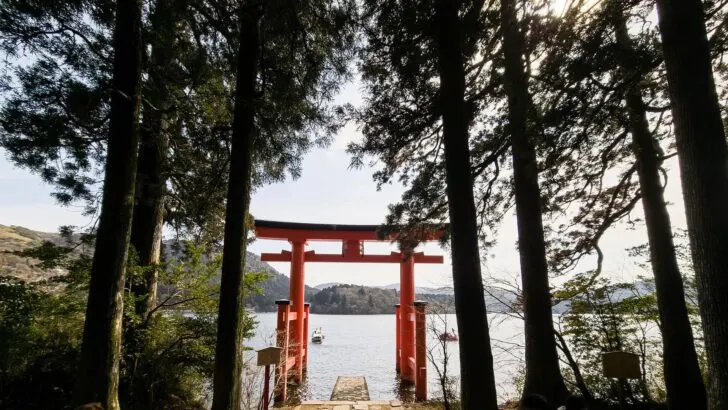
Hakone Shrine
The Hakone Shrine is without a doubt one of the top attractions of the Hakone Loop. One of the most iconic features of this shrine is the picturesque Torii gate. Standing majestically in the waters of Lake Ashi it is the entrance to the shrine for those people arriving over water.
From the gate, a long flight of stairs leads up to the shrine’s main building, called Honden. The shrine is believed to bring blessings for safe travel, which can explain why it is such a popular destination for tourists.
If, like so many others, you want to take a photo of yourself posing in front of the Torii gate, you will have to be patient. When we were there there was a line of at least 50 people.

Moto-Hakone
From Hakone Shrine, you can reach Moto-Hakone in 15 minutes on foot. If you have not yet done the cruise, you can board the pirate ship here.
If you arrive here by boat this is the place to get off to visit the Hakone Shrine.
We boarded the pirate ship in Moto-Hakone and sailed to Togendai and from there back to Hakone-Machi.
It is ideal to end your trip in Hakone-Machi as you can then take the bus at the final stop and have a better chance of getting a seat. Moreover, you can also visit the Hakone Checkpoint there.

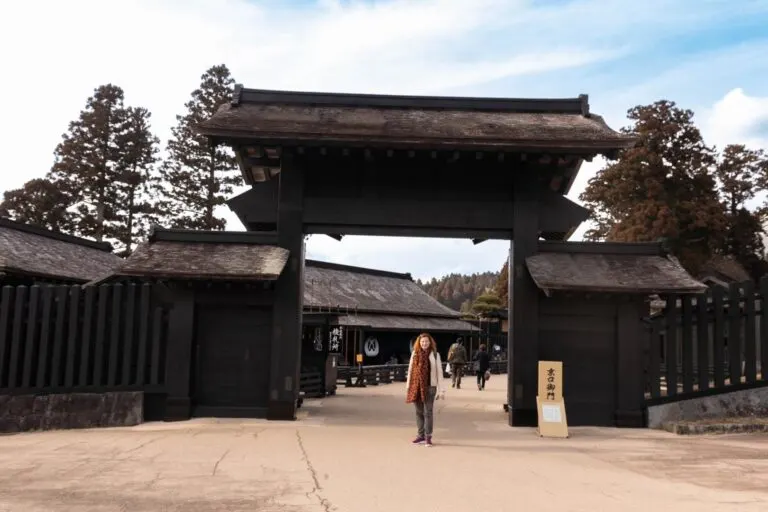
Hakone Checkpoint
The Hakone Checkpoint is located between Hakone-Machi and Moto-Hakone, the 2 stops of the pirate cruise on the southern edge of Lake Ashi.
The checkpoint dates back to the Edo period. It was managed by the Tokugawa Shogunate who wanted to have control over the trade along the Tokaido route between Kyoto and Edo (present-day Tokyo).
The buildings have been reconstructed and you can see where people were checked and how cargo was weighed. Whenever the weight exceeded the legal limit extra taxes would be imposed. Security was also an important aspect, the shogunate wanted to be sure that no weapons were smuggled into Edo.
Onshi-Hakone Park
Walking through the checkpoint coming from Hakone-Machi you will arrive at Onshi-Hakone park.
On a clear and sunny day, it is definitely worth taking a stroll in the park. It features an observation platform from where you can enjoy panoramic views of the lake with Mt. Fuji in the backdrop.
To reach the observation platform, follow LakeSide rd, on your left just before you reach the parking lot.
The End
This is where the Hakone Loop ends.
If you are staying in Hakone for several days, our advice would be to book a hotel in the centrally located Gora. The ‘H’ bus travels between Hakone-Machi and Kowakidani where you board the train to Gora.
If you’re heading back to Tokyo you board the ‘K’ bus to Hakone-Yumoto where you then change to a train to Odawara and onwards to Tokyo.
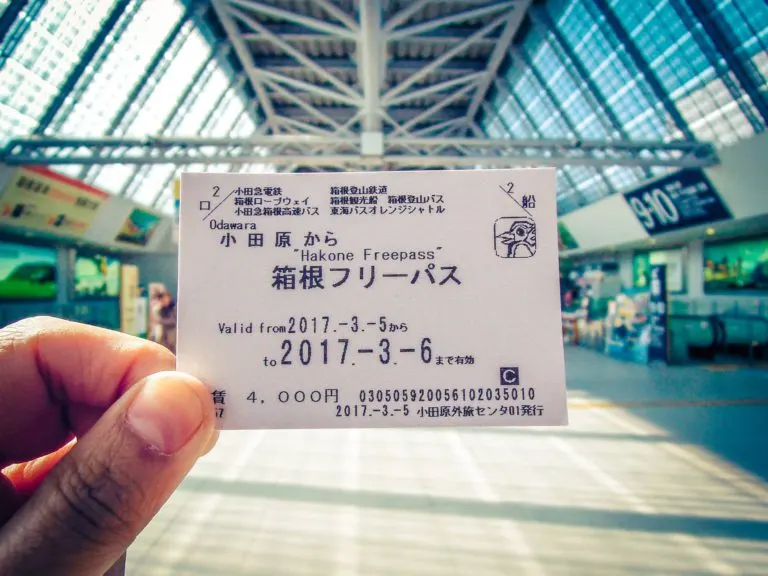
Hakone Freepass
If you’re exploring the Hakone region, the Hakone Freepass is an excellent discount pass.
The pass provides unlimited access to all modes of transportation within the Hakone Loop and offers discounted admission to several popular attractions in the area.
It’s a convenient and cost-effective way to make the most of your visit. While the savings may not be significant for a day trip, the pass offers the convenience of not needing to purchase individual tickets repeatedly. It allows for seamless transfers between the various modes of transportation of the Hakone Loop.
The pass is valid for 2 or 3 days. If you’ll be spending more days in the region, your savings will increase.
Do you need more info? Read our full guide on the Hakone Freepass.
Book your Hakone Freepass:
Buy on Klook
Leave a Reply